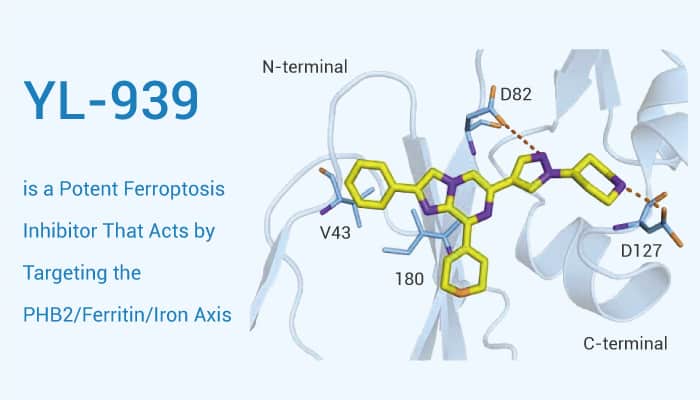Ferroptosis is a form of programmed cell death mediated by iron-dependent lipid peroxidation and was first proposed by Brent Stockwell and Scott J. Dixon in 2012. It differs genetically and biochemically from other forms of regulated cell death, such as apoptosis, uncontrolled necrosis, and necrotizing apoptosis. The main features are the accumulation of intracellular iron ions and high levels of reactive oxygen species (ROS)-induced lipid peroxidation. Ferroptosis cells result in a variety of cellular morphological changes, including loss of cell membrane integrity, partial release of cell contents, and a significant reduction in mitochondrial volume. Importantly, ferroptosis can mediate a variety of diseases, such as acute organ damage and neurodegenerative diseases. Also, the inhibition of iron death is a kind of promising strategy for the treatment of related diseases.
Anti-proliferative protein 2 (PHB2; Prohibitin-2) is mainly localized to the inner mitochondrial membrane. Additionally, it is important for maintaining the stability of mitochondrial morphology and function. Besides, it is an important regulator of intracellular homeostasis and cell differentiation and serves as an important mediator between the mitochondria and the nucleus.
YL-939 is a potent ferroptosis inhibitor that acts by targeting the PHB2/Ferritin/Iron Axis.

YL-939 (0.01-10 μM) effectively protects cells from iron death with IC50 values of 0.14 μM, 0.25 μM, 0.16 μM, 0.16 μM and 0.24 μM for HT-1080, Miapaca-2, Calu-1, HCT116, and SHSY5Y cells respectively. Besides, YL-939 (5 μM; 10 h) can reduce ROS levels in ES-2 cytosol and membrane lipids and is a biological target of PHB2. Moreover, YL-939 (3 μM; 10 h) inhibits ferritin autophagy by increasing nuclear receptor coactivator 4 (NCOA4) expression in a concentration-dependent manner, improving ferritin expression and blocking autophagosomes/lysosomes in ES-2 cells. Furthermore, in acetaminophen (APAP)-induced liver injury in male C57BL/6J mice, YL-939 (3 mg/kg; intraperitoneal; single injection) inhibits cell death and inflammatory infiltration in liver tissue and improved liver injury in the mice.
In conclusion, YL-939 was a potent inhibitor of iron death and significantly improved liver injury in a model of iron death-related acute liver injury.
References:
[1] Wei Yang, et al. Nat Commun. 2022 Dec 3;13(1):7473.
[2] Zhengming Tang, et al. Front Cell Dev Biol. 2021 Nov 29;9:765859.